GLP-1 acts on habenular avoidance circuits to control nicotine intake
- PMID: 28368384
- PMCID: PMC5541856
- DOI: 10.1038/nn.4540
GLP-1 acts on habenular avoidance circuits to control nicotine intake
Abstract
Tobacco smokers titrate their nicotine intake to avoid its noxious effects, sensitivity to which may influence vulnerability to tobacco dependence, yet mechanisms of nicotine avoidance are poorly understood. Here we show that nicotine activates glucagon-like peptide-1 (GLP-1) neurons in the nucleus tractus solitarius (NTS). The antidiabetic drugs sitagliptin and exenatide, which inhibit GLP-1 breakdown and stimulate GLP-1 receptors, respectively, decreased nicotine intake in mice. Chemogenetic activation of GLP-1 neurons in NTS similarly decreased nicotine intake. Conversely, Glp1r knockout mice consumed greater quantities of nicotine than wild-type mice. Using optogenetic stimulation, we show that GLP-1 excites medial habenular (MHb) projections to the interpeduncular nucleus (IPN). Activation of GLP-1 receptors in the MHb-IPN circuit abolished nicotine reward and decreased nicotine intake, whereas their knockdown or pharmacological blockade increased intake. GLP-1 neurons may therefore serve as 'satiety sensors' for nicotine that stimulate habenular systems to promote nicotine avoidance before its aversive effects are encountered.
Conflict of interest statement
The authors declare no competing interests.
Figures
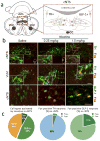
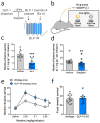
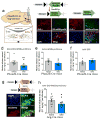

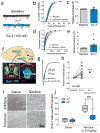
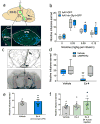

Similar articles
-
α3* Nicotinic Acetylcholine Receptors in the Habenula-Interpeduncular Nucleus Circuit Regulate Nicotine Intake.J Neurosci. 2021 Feb 24;41(8):1779-1787. doi: 10.1523/JNEUROSCI.0127-19.2020. Epub 2020 Dec 30. J Neurosci. 2021. PMID: 33380469 Free PMC article.
-
Habenular α5 nicotinic receptor subunit signalling controls nicotine intake.Nature. 2011 Mar 31;471(7340):597-601. doi: 10.1038/nature09797. Epub 2011 Jan 30. Nature. 2011. PMID: 21278726 Free PMC article.
-
Nicotine aversion is mediated by GABAergic interpeduncular nucleus inputs to laterodorsal tegmentum.Nat Commun. 2018 Jul 13;9(1):2710. doi: 10.1038/s41467-018-04654-2. Nat Commun. 2018. PMID: 30006624 Free PMC article.
-
Neural effects of gut- and brain-derived glucagon-like peptide-1 and its receptor agonist.J Diabetes Investig. 2016 Apr;7 Suppl 1(Suppl 1):64-9. doi: 10.1111/jdi.12464. Epub 2016 Mar 31. J Diabetes Investig. 2016. PMID: 27186358 Free PMC article. Review.
-
The habenulo-interpeduncular pathway in nicotine aversion and withdrawal.Neuropharmacology. 2015 Sep;96(Pt B):213-22. doi: 10.1016/j.neuropharm.2014.11.019. Epub 2014 Dec 2. Neuropharmacology. 2015. PMID: 25476971 Free PMC article. Review.
Cited by
-
T-Type Calcium Channels Contribute to Burst Firing in a Subpopulation of Medial Habenula Neurons.eNeuro. 2020 Aug 12;7(4):ENEURO.0201-20.2020. doi: 10.1523/ENEURO.0201-20.2020. Print 2020 Jul/Aug. eNeuro. 2020. PMID: 32719103 Free PMC article.
-
An inhibitory brainstem input to dopamine neurons encodes nicotine aversion.Neuron. 2022 Sep 21;110(18):3018-3035.e7. doi: 10.1016/j.neuron.2022.07.003. Epub 2022 Aug 2. Neuron. 2022. PMID: 35921846 Free PMC article.
-
Chronic sleep fragmentation enhances habenula cholinergic neural activity.Mol Psychiatry. 2021 Mar;26(3):941-954. doi: 10.1038/s41380-019-0419-z. Epub 2019 Apr 12. Mol Psychiatry. 2021. PMID: 30980042 Free PMC article.
-
Vagal Interoceptive Modulation of Motivated Behavior.Physiology (Bethesda). 2018 Mar 1;33(2):151-167. doi: 10.1152/physiol.00036.2017. Physiology (Bethesda). 2018. PMID: 29412062 Free PMC article. Review.
-
Salmon Calcitonin Attenuates Some Behavioural Responses to Nicotine in Male Mice.Front Pharmacol. 2021 Jun 21;12:685631. doi: 10.3389/fphar.2021.685631. eCollection 2021. Front Pharmacol. 2021. PMID: 34234676 Free PMC article.
References
-
- Kenny PJ, Markou A. Nicotine self-administration acutely activates brain reward systems and induces a long-lasting increase in reward sensitivity. Neuropsychopharmacology : official publication of the American College of Neuropsychopharmacology. 2006;31:1203–1211. - PubMed
-
- Picciotto MR, et al. Acetylcholine receptors containing the beta2 subunit are involved in the reinforcing properties of nicotine. Nature. 1998;391:173–177. - PubMed
MeSH terms
Substances
Grants and funding
LinkOut - more resources
Full Text Sources
Other Literature Sources
Molecular Biology Databases

